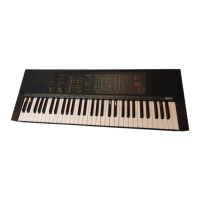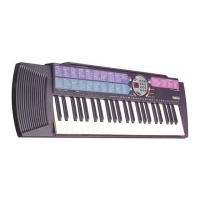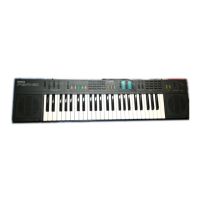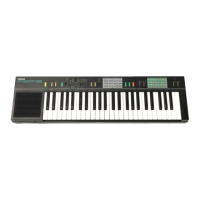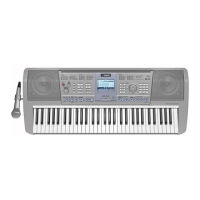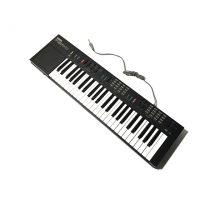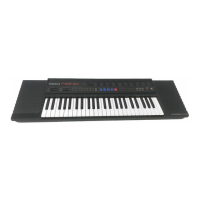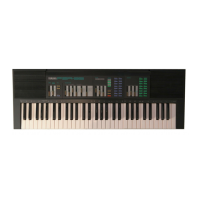Effects
30
DSP
The DSP effect section provides distortion and chorus effects, plus a wealth of
other useful and dynamic effects for enhancing and changing the sound of the
voices. Included among these miscellaneous effects are reverse gate reverb,
phaser, rotary speaker, tremolo, echo, delay, distortion, equalization, and wah. A
total of thirty-eight DSP types are available.
1 Select the DSP function.
Press the left Overall button, repeatedly if necessary, until the dark bar indi-
cation appears next to DSP.
2 Set the DSP Type, if desired.
Use the numeric keypad or [+]/[-] buttons to set the desired DSP Type. (For
a list of the available DSP Types, see page 32.) To turn the DSP effect off,
select DSP Type #39.
Indicates DSP is
selected
Current DSP Type name and number.
Stage2
06
• Each voice of the PSR-GX76 has
its own independent DSP setting.
• Fifty-one additional DSP Types
are available when controlling the
PSR-GX76 from a MIDI device.
(For details, see page 86.)
Restoring the Default DSP Type
If you’ve changed the DSP Type,
you can instantly restore the
default setting by pressing both [+]
[-] buttons simultaneously (when
DSP is selected).
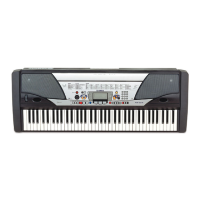
